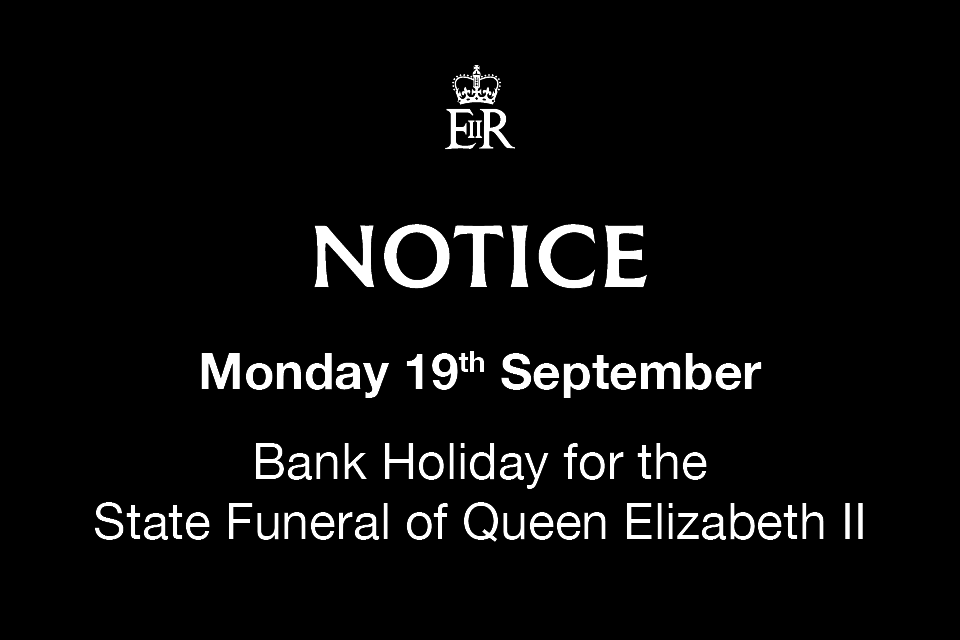Is there ever a ‘good way’ to tell people they no longer have a job? Well, Twitter and Stripe have recently had to grapple with this challenge, with other companies, such as Meta, following swiftly behind.
How leaders respond and communicate in difficult times is key to the health and wellbeing of both their people, and their business. Many companies have often already publicly declared how they want to talk to people, through proudly displayed value statements on their websites.
Blowing your own trumpet on what matters to your business is great, but it must be real. Have a little read of how important Twitter thinks healthy conversation is. In summary … ‘should be able to speak your mind’ … ‘find credible information easily’ …’want you to be part of the conversation’ … ‘you should feel safe.' Then consider the chaotic communication around the severance of potentially 7,500 Twitter staff over the past few weeks. This story has been delivered to the public domain through knee-jerk tweets from company leaders, complemented by tales of exceptionally poor treatment shared by disgruntled (and who can blame them) former employees.
Twitter slashed nearly half of its workforce without any warning or formal process
In stark contrast, financial infrastructure internet startup Stripe, issued a bold press statement, publicly explaining how and why they would be laying off 14% of their workforce. In a message that was slick beyond belief, the leadership team explained clearly what they were doing, and took full responsibility for mistakes that had been made. Their brand values? Well, they include: ‘move with urgency and focus’, ‘think rigorously’ and ‘optimism’. Their statement about staff lay-offs, is a perfect ode to their brand values. This is a crucial lesson for all leaders.
Create strong values, that you can really live by. Make them the foundation for your business and you will have a unshakeable confidence that will help to guide you through the tough times. This nugget, is the first of our essential lessons for leaders on laying people off with decency and integrity …
Stripe cut 14% of its staff and released one of the best statements I've ever seen
Always follow your internal procedures and comply with employment law
Above all, leaders must take note of the clear legislation and guidance from ACAS to guide employers who are considering making redundancies. If you’re not sure which process and procedure to follow, or which legislation applies to your changes, talk to your HR Business Partner or give us a call.
Ending people’s employment is one the hardest things you must do as a leader. We have lots of experience in supporting organisations to make difficult decisions with compassion and confidence. If you could benefit from the advice of an experienced specialist, then please, get in touch.
Twitter & Stripe: Do They Practise What They Preach?



Live your values – more so during challenging times

Lay-off and redundancy procedures should, as a minimum, be legally compliant

Word will get out – manage the message

Remember the people left behind – support them

Put a recovery plan in place

Final thought
I need HR support to restructure my team
Category: Leadership and Teamwork
Cost of Living Crisis: What’s a CEO to do?
Many businesses are now under extreme financial pressure, as the price of energy bills, goods and services continues to rocket. But that’s not all CEOs are worrying about, in addition most decent bosses will also be deeply concerned about how their people will survive the coming months.

CEOs are grappling with current cost of living crisis and how the aftershocks of the pandemic effect their operations. But you can’t separate the prosperity of a business from the prosperity of the workforce.
There is now a growing, immediate need to make sure people have food, warmth and shelter.
How shocking is it to read that several NHS Trusts have already set up food banks or launched food voucher schemes to support their staff?
As well as being an all-round total sh*tshow for running a business and a household, the UK cost of living crisis inevitably blurs the boundaries between home and work ‘problems’. The burden of everything being too expensive, weighing heavily on personal lives, work lives and mental health.
Leaders now recognise that the cost of living is affecting people at work

How will work life be impacted by the cost of living crisis?
There’s no arguing that life feels uncertain, and the economic outlook is unclear. We don’t know how work will be affected by the cost of living crisis, and many business leaders are still trying to work out what to do for their customers and team members.
If you understand what’s likely to happen in your business, it will help you design the right support for your team…
Shift in balance of home / office working
- As people choose between the cost of travelling to work vs heating their homes, and keeping money aside for other essentials, we’re likely to see a shift in the balance between the number of home working days and going on to site.
- Is it more expensive to stay at home and work or travel to site to work?
Key workers will suffer disproportionately
- The disparity between those who benefit from home/remote working and those who must come into work is likely to widen.
- At the time of writing, it seems that fuel prices have dropped slightly but they’re unlikely to come back down to the heady days of £1.50 per litre.
- This disproportionately impacts certain sectors: the emergency services, shops, factories, health worker, refuse collectors, schools … the very people we depended on during the pandemic.
Many working people with modest salaries will be in fuel poverty
- Although the Energy Price Guarantee has been introduced, the cost of home energy has more than doubled in the past 18 months.
- The End Fuel Poverty Coalition estimates that the number of households across the UK in *fuel poverty from 1 October 2022 will be 7 million, this could rise to 7.8 million from early 2023.
- If you have people in minimum pay roles in your business, it’s quite possible that they will be in fuel poverty.
Our pandemic 'heroes' are going to suffer disproportionately vs. everyone else

What can CEOs do right now to support employees through the cost of living crisis?
- Many companies are now offering one off ‘cost of living’ payments, which come with their own challenges.
- Bit of a no sh*t Sherlock one this … but prevention is better than cure – make sure you pay people at least a living wage.
- No, not the National Living Wage but the Actual Living Wage as measured by the Living Wage Foundation.
- If you’re not sure you can afford a living wage, there may be ways you can make your business more efficient and unleash potential to achieve more, or create headroom for better wages.
If you’ve made more than you thought, share it!
- If you’ve made greater profits than forecast, consider passing on some of those earnings to your team, as soon as possible.
- It goes without saying that your people are your greatest asset and should share in the company’s successes.
Don’t pay for employee benefits that nobody uses
- Stop funding ‘ghost’ benefits and reinvest that money.
- Whether you’re due to review your employee benefits or not, now is the perfect time to look at the flexible/opt-in benefits that you offer and understand if they’re being used or not.
- Things like perks websites, opt-in discount schemes, employee health cash plans, all cost money. If they’re not making a difference, get rid and use the money in a different way.
Satisfaction with pay, reward and benefits is constantly changing – you have to keep pace with the market!
“Individuals’ preference and satisfaction levels in relation to reward are dynamic, not fixed. External events, for example a recession, can affect individuals’ confidence, altering their satisfaction with current reward offers.”
— CIPD 2015, Show me the money, the behavioural science of reward
Make sure everyone knows if help is already available
- If you have an Employee Assistance Programme (EAP) it may well offer 24/7 access to wellbeing, financial and legal advice.
- This means employees and workers (including board members and volunteers) can go to someone independent if they’re struggling.
- If you’ve got this benefit shout about it!
- Make sure everyone* that’s eligible knows about it. (*Some EAP providers have a minimum earning level/working hours in the contract so check first.)
Plan for more people coming ‘in’ rather than working at home
- Facilities, HR and Operations teams should prepare now for greater workspace usage over the winter.
- Remember: you should have plans in place to comply with any change in COVID-19 public health measures alongside a greater desire to come into the office (if possible).
Proactively talk to your team about the support available to them

What should CEOs do in the medium term to help employees survive inflation?
Just yesterday, the Office for National Statistics (ONS) announced that the main measure of inflation, the Consumer Prices Index (CPI) was 11.1% in October 2022, up 10.1% in September 2022.
CPI is at an eye-watering figure and it’s not something you can control, so what can you do?
Pay your team fairly
- Many companies are now offering one-off ‘cost of living’ payments, which come with their own challenges.
- Bit of a no sh*t Sherlock one this … but prevention is better than cure – make sure you pay people at least a living wage.
- No, not the National Living Wage but the Actual Living Wage as measured by the Living Wage Foundation.
- If you’re not sure you can afford a living wage, there may be ways you can make your business more efficient and unleash potential to achieve more, or create headroom for better wages.
Bring in independent advisors to help people
- Financial wellbeing and education is something most employers don’t know they can provide for their teams.
- We’ve seen plenty of examples of organisations working with independent advisors and coaches to help their teams manage their money well and deal with any debt issues that might also be crippling their household budgets.
Creative thinking around the affordability of travelling to work
- Travel allowances have fallen out of fashion, but it might be time to reconsider, perhaps refocusing on public transport rather than vehicle allowances.
- If you’re not able to offer a travel allowance, you might want to consider an interest-free season ticket loan that colleagues can access via payroll.
- You’re not actually paying for the season ticket; however, you’re helping your colleagues to avoid a crippling season ticket payment and reduce the cost of coming to work.
- If lots of people drive, consider a carshare scheme.
- You could also introduce a cycle to work scheme, which would help support health and wellbeing as well as being a travel solution.
Help people charge their cars for free
- Add EV charging/parking points to your company properties/car parks.
- This won’t help everyone but as EVs become more popular, it’s another way to help your team and encourage others to switch away from petrol/diesel.
- If you have solar panels on your buildings, use the energy to feed the EV charging points FOR FREE for your colleagues and visitors. (If you’re in Wales/South West we can recommend some reliable contractors to do this work for you – get in touch)

How can CEOs insulate their staff against future financial hardships?
In addition to the short and medium-term options we’ve discussed in this article, there are opportunities for leaders to help insulate employees against future financial hardship.
Here’s some ‘slow-burn’ options that are likely to help with the family finances, and increase engagement, loyalty, productivity and performance.
Performance-related pay scheme
- Consider how you can share profits through a performance-related pay scheme.
- Maybe even consider how an employee ownership model might work for you?
- There is no ‘one size fits all’ approach here and in some sectors, this wouldn’t be right, e.g. use of public money, however it’s worth looking at if it’s an option that’s appropriate for you.
Shadow equity schemes
- If performance-related pay isn’t right for your business, you might want to consider a shadow equity scheme (good for VCs and those looking to retain key talent, grow and sell within 3-5 years).
- A great way to share the benefits of a business sale with your team.
Long term incentives plans (LTIP) for executives
- These tend to work better for businesses and executives alike, rewarding long term performance and productivity instead of short-term results.
- In the context of a cost of living crisis LTIPs incentivise executives to make decisions that retain talent and ensure a good customer experience, meaning executives are less likely to make short-term decisions to save a few quid at the expense of long-term performance.
Don’t know where to start when it comes to supporting your team through the Cost of Living Crisis?
We are passionate about finding ways to help bosses do the best they can to look after their people.
Some of what we’ve outlined here is simple, but implementing activity that’s targeted to help those that need it most often gets businesses in a pickle. Primarily because they get bogged down about treating all employees the same.
If you need help to work how to support those that need it in a way that’s fair and legal, then please drop us a line. We’d be happy to talk to you.
State Funeral Bank Holiday – what are my obligations as an employer and what does this mean for my team?
Monday 19th September 2022, the date of Her late Majesty Queen Elizabeth II’s State Funeral, will be a UK Bank Holiday. A statement released via the UK Government website says “Monday 19 September, the date of Her Majesty Queen Elizabeth II’s State Funeral, will be a national bank holiday”. Business owners, leaders and managers have only a few days to decide how to manage the additional bank holiday.
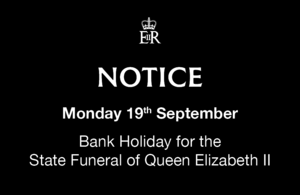
“This will allow individuals, businesses and other organisations to pay their respects to Her Majesty and commemorate Her reign, while marking the final day of the period of national mourning.”
“This bank holiday will operate in the same way as other bank holidays, and there is no statutory entitlement to time off. Employers may include bank holidays as part of a worker’s leave entitlement.”
This date marks the final day of the period of national mourning. UK Government advice is clear, to a point.
The way you manage the additional bank holiday is largely dependent on the wording of your contracts of employment, custom and practice in your business, and given the unique circumstances you’ll also need to be sensitive to the needs of your team.
The broad advice from the UK Government is that “this is a matter for discussion between individuals and their employer”. If nothing else, we’d advise you to take a sensible, pragmatic approach and ask your team what they want to do.
Here’s the answers to the FAQs we’ve been asked (so far)…
We’ve done our best to pull together a practical set of FAQs with sensible suggestions on how to manage the additional bank holiday. Please get in touch if you need specific advice for your business or organisation.
A note about our FAQs and examples: please do not interpret this article as formal guidance or legal advice. Our FAQs and examples are here to guide your decision-making process but we’d always suggest you consider in the broader context of your customer needs, contractual terms and your workplace culture.
Do I have to close my business on 19th September 2022?
No, if you would normally be open on Monday 19th September 2022 there is nothing in law to prevent you from opening as normal.
It’s worth bearing in mind that over the weekend we’ve all seen pictures and videos of the huge national outpouring of grief and celebration of Her late Majesty’s life.
It likely that you have customer, suppliers, key stakeholders and prospects who will want to celebrate the life of Queen Elizabeth II. By the same token there will be others who will not want to commemorate her reign and will want to escape the news coverage and media reporting.
This isn’t a royalist vs. republican ‘thing’; you need to do what’s right for your organisation.
You’ll also need to weigh-up the benefits and practicalities of staying open vs. closing, including whether you have enough team members available (which leads us nicely onto our next question…).
There is no legal requirement to close your business on 19th September 2022
Are schools, colleges and other government services going to be closed on 19th September 2022?
Yes, we understand that all public-sector schools will be closed on 19th September 2022. Colleges and Universities are also likely to be closed (TBC).
We also expect all UK Government Departments and Local Authority offices to be closed, although critical services such as the National Health Service and other 24/7 services will remain open. Please check with your local service providers for specific opening times.
Naturally, this means that families, parents and grandparents of school-age children will either need to find childcare within the next few days, or will need to talk to you about whether they can have the day off work.
We think it’s better to manage time-off as sensibly as possible, taking all the learnings from the agility and responsiveness shown by teams during the COVID-19 pandemic.
If you can manage time-off without resorting to formal policies and procedures, particularly for families and working parents and grandparents, so much the better.
Schools will be closed on 19th September 2022
Does the bank holiday mean that I have to give employees the day off work?
In a word, no. There is no statutory entitlement to time off for bank holidays.
You don’t ‘have to’ give colleagues the day off but you might want to consider requests for annual leave if you’re not closing on 19th September 2022.
If you are closing and would normally be open, most (if not all) employees should be paid as normal if they’re available for work.
There is no statutory entitlement to time-off on a bank holiday
Interestingly, the UK Government has said:
“The government cannot interfere in existing contractual arrangements between employers and workers.”
“However, we would expect that many workers will be able to take the day off on the bank holiday.”
“We also expect employers to respond sensitively to requests from workers who wish to take the day of the funeral off work.”
Example 1 – your contract of employment states ‘employees are entitled to 20 days annual leave (statutory minimum) plus public/bank holidays’.
Yes, your employees are entitled to an extra day’s holiday.
Why? Because 19th September 2022 is public/bank holiday and the example contract wording doesn’t state (or limit) the number of public/bank holidays.
Don’t forget: part time workers are entitled to a pro-rata amount based on their working hours/pattern.
Example 2 – your contract of employment states ‘employees are entitled to 28 days annual leave including public/bank holidays’.
A probable interpretation of the wording would suggest ‘yes’, they’re entitled to an additional holiday.
Why? The statutory minimum of annual leave is 20 days and there will be 9 public holidays in 2022 (29 days)
Huh? The wording of the contract says ‘including’ public/bank holidays without specifying the exact number, but since offering <20 days annual leave is not legal, an additional day’s entitlement is implied.
Don’t forget: part time workers are entitled to a pro-rata amount based on their working hours/pattern.
Example 3 – your contract of employment states employees are entitled to >28 days annual leave including public/bank holidays, for example ‘35 days annual leave including public/bank holidays’.
A strict interpretation of the wording would suggest ‘no’, they’re not entitled to any additional holiday.
Why? You already offer greater than the statutory minimum of annual leave and public holidays, and the wording says ‘including’ without specifying the exact number.
Given the unique circumstances you may decide to grant the additional day either on-the-day or as an addition to your employees’ total time-off allowance for the year.
Check your contractual entitlement wording before making any decisions
This list isn’t intended to cover every situation. Naturally there may be other examples of working patterns and contractual entitlements. Always check your contracts before making any decisions and if you’re not sure, talk to your HR Business Partner or give us a call.
What is the UK Government advising employers to do?
There are so many different and unique contractual arrangements between employers and employees, it’s impossible to come-up with a list of instructions that will cover all eventualities.
The UK Government has put out a press release which covers the basics. You can read the full press release on the UK Government website.
There is no ‘one size fits all’ set of instructions for employers
Four practical things to do this week
Make a decision, ideally by mid-week to give you plenty of time to communicate what’s going on. For your team, the earlier you can decide the better, especially if they’re going to need to make arrangements for childcare. This is important for everyone, including your customers. If you are closing, make sure you update your Google Maps listing and other directories where you publicise your opening hours, otherwise your team might come back to complaints from people trying to reach you.
Get HR and/or legal advice (if you need to). If your contractual entitlements or working arrangements are complex, don’t be afraid to get some help from your HR and legal advisors. It’s best to be safe.
Update your HR / Annual Leave system with the additional bank holiday. If you use a service provider they’ll probably have a help page on their knowledge base to help you get this done. Just bear in mind they can’t make the decision on how to handle the additional day, so if you decide to give everyone an additional day off, you’ll probably need to do a bulk upload/change of annual leave entitlement too.
Remind your employees about your Employee Assistance Programme. Over the weekend we’ve seen how many people have come out to share their grief and celebrate the life of Her late Majesty Queen Elizabeth II. Some people in your team may have been deeply affected by the death of The Queen, they may need to access the wellbeing services via your Employee Assistance Programme (EAP). Similarly there may be people in your team who do not support the monarchy or the Royal Family and have been triggered by the events of the past few days; they too may benefit from the services of your EAP.
Don’t know where to start?
There’s only a few days to make arrangements and communicate with your team and your customers.
If you’re struggling to wade through contractual entitlements and the practicalities of the additional bank holiday, feel free to give me a call for support and advice.
How to Lead Hybrid Teams
Shake it all about! We all know traditional working practices have changed. People have been flipping between being in and out of the office for over 2 years now. Something which has undoubtedly shaken many companies.
Lots of office workers have now been instructed to return for at least some of the week. But the situation that greets them varies hugely between organisations, internal teams and even pay grades.

How does it feel if your CEO has said you have to be in the office everyday, but you’ve not seen them up close and personal for weeks?
Or how about if some teams in the business are in, but others are entirely home-based?
The aftermath of the pandemic has left a huge swathe of organisations with fragile, fractured or ‘not quite figured out yet’ working environments. Some organisations moved quickly to new working policies whereas others have muddled along without formalising new ways of working.
C-suite executives expect 87% of work to be done via some form of hybrid working
According to research by McKinsey, most organisations don’t yet have a detailed vision in place for hybrid working, with as few as 3 out of 10 organisations having both prepared for and communicated their vision for the post-pandemic world. Despite this, executives expect most work to be done via some form of hybrid work in future. Perhaps many of us are still in ‘reaction mode’ and the case for hybrid working is still unclear?

Why could a hybrid working model be good for my business?
If you’re considering it, it’s probably because you’re already doing it in some way. Hybrid working became a necessity in the pandemic.
Some organisations only did it because they had to, and for some companies, being at work in person will always be the best model for them.
Hybrid working is no longer a ‘nice to have’, it’s a ‘must have’ for most workers
Benefits of Working at Home
-
Focused periods of concentration on tasks that are best done uninterpreted.
-
A place to do virtual calls.
-
Good for those who need adjustments to their working environment, such as people with a disability.
-
More useable time in the day for those who have a lengthy commute.
-
A better work/life balance.
Benefits of Being in The Workplace*
Informal learning of technical knowledge… being in earshot of colleagues.
Learning good leadership skills by listening to and ‘soaking up’ the actions of positive role models.
More chance to naturally include less confident colleagues, in meetings that are in-person.
More opportunities for new starters to absorb company culture.
*Not of the ‘benefits’ of working in the workplace are effective if leaders and relevant colleagues are not there… AT THE SAME TIME!
Absorbing and contributing to company culture is virtually impossible at home

How do I lead a fully hybrid team?
Hybrid working is not new. Tech companies like Google have been doing it across teams successfully for many years.
The reason they and others adopted it in the first place was because it was better for productivity.
For hybrid working to work, leaders need to be clear and visible and employees need to understand how their work fits into big picture company objectives.
Agree the ground rules for hybrid working, including what leaders need to do
Five practical steps to successful hybrid working
There are some specific steps that every leader can take to make hybrid working work for you, your team and most importantly, your customers. One word of warning before you start…don’t be the CEO that says everyone has to work in a certain way, except you. That’s a sure-fire way to make sure hybrid working doesn’t work.
Step 1 – Make an Agreement (Formal or Informal)
If people have become used to the flexibility of 100% home working they need time to put a new routine in place.
Remember, people will be factoring in the cost of commuting, cost of living and childcare responsibilities.
You may be perfectly entitled to have them back in the office but do it with compassion.
Top Tip: an informal or formal agreement can help get people back into the office, particularly if different parts of your business need different levels of on-site and remote working.
Step 2 – Lead by Example
You may have always worked from home as a leader, but for hybrid working to be successful, days in the office have to be really meaningful.
You need to model this way of working to make sure that engagement with company culture and productivity stays high.
Not sure your company culture is strong enough? Here are 10 proactive things you can do as a leader to improve your culture.
Step 3 – Make Office Dates Matter
Understand which tasks work better at home and which benefit from face-to-face communication and plan around this.
There is no point in scheduling lots of virtual calls on a day when everyone’s in the office. It’s pointless. (Ever travelled to work, done a day of Teams or Zoom calls from the office, then travelled home when you could have been anywhere? Ergh.)
Also try to schedule company-wide office dates so that people are able to ‘drop in’ on useful colleagues.
Step 4 – Plan Unstructured Collaboration Time
Scheduling unstructured collaboration time will invigorate your team, encourage creative thinking and help people feel positive about coming into work.
A Deloitte survey of over 3,500 workers showed that people are up to 20% more satisfied with their workplace culture when they have access to collaboration tools that enable them to work in teams, and 34% happier with their workplace when collaboration and innovation are encouraged.
We also know that productivity, revenue, and profitability are all positively impacted by engagement at work – collaboration with colleagues is just one way to keep your team engaged.
Step 5 – More Office Time For New Starters & Their Managers
Your organisation is a complex web of different traits, habits, actions … ways of communicating.
All of these are compromised if newbies aren’t properly integrated into the organisation.
Plan extra time in the office for people joining your organisation and their managers.
Top Tip: set an expectation that managers are on-site with new colleagues for their induction, you can share the responsibility amongst a pool of managers so new starters kick-start their internal networking.
Ringfence your time at the office for collaboration and engaging with your team

Why can’t I get my team to come back to the office?
Lots of people like working from home but it’s not without challenges, subsequently a sensible hybrid model is a pretty logical way of working for most people.
So, if you’re really struggling to get people to come back, it’s likely that your office was not a welcoming, inclusive and flexible environment in the first place!
If you’re a leader that would like a conversation about how to create and manage a hybrid working model, get in touch. We’ll show you how to enhance every professional relationship across your entire business.
A welcoming, inclusive and flexible workspace is essential for hybrid working
Don’t know where to start?
I know that making changes to your workplace and culture can be daunting – most people don’t know where to start.
I love working with Exec Teams to improve performance and unleash the potential of their organisations. Who knows what you might achieve?
Give me a call if you want to explore the options for hybrid working in your team.
Image credits
Images sourced from Canva Pro and are photographers are not individually credited. If you see one of your photos above,please let us know so we can credit you here. Photo of Andrew Knight by Nick Morrish from Nick Morrish Photography
References
Digital collaboration. Delivering innovation, productivity and happiness. Deloitte (2013)
What executives are saying about the future of hybrid work. McKinsey & Company (2021)
Cut through to your customers: Use HR Business Partners to sharpen your competitive edge
Business partners are strategic thinkers, who nurture talent and get things done. In HR they can improve people management, reduce pointless admin and get the team firing on all cylinders.
They see through internal teams, to focus on bigger business goals, helping create better synergy between everyday work and big-picture company ambitions.
Business partnering was designed by Dave Ulrich almost 30 years ago, to help join up organisational strategy, workplace culture and business objectives. The model creates people solutions that deliver better commercial results.
HR Business Partners create solutions that get you better results

How do HR Business Partners (HRBPs) work?
It varies depending on the business, but there are two common models of HRBP, explored in detail by the CIPD in their Business Partnering Factsheet, but in brief:
Standalone HR Business Partners – aligned to a specific business unit
The CIPD defines this role as “the focus of the relationship between HR and L&D and the business, ensuring HR and L&D are aligned effectively with the teams and individuals they support. BPs are facilitators and business consultants, ensuring that the HR value proposition is both relevant and effective.
Three-pronged HRBP model – where the HR service runs across three areas of expertise:
-
Shared Services – A centralised group handling transactional services across the organisation, such as payroll, sickness, recruitment and administrative HR support.
-
Centres of Excellence – Small specialist HR teams, delivering business and people benefits. They tend to manage work around innovation, learning, reward, employee engagement as well as nurturing talent.
-
Strategic Business Partners – Experienced people professionals who work closely with leaders. Embedded in business units, influencing, steering and implementing business and people strategy.
HR Business Partners work closely with leaders to implement business strategy

What does a good Business Partner look like?
Business partnering is skilled role that needs a mix of experience, values, capability and knowledge. It’s not suited to everyone.
I’ve seen HR Business Partnering done differently in many organisations and every successful HRBP has a unique set of skills, knowledge and experience.
Business Partner Skills
There are some specific skills that elevate fantastic HRBPs way above the mediocre. A top level HRBP will be able to:
-
Quickly establish positive working relationships that deepen over time.
-
Work closely with business leaders and/or line managers.
-
Lead on complex HR projects with credibility.
-
Be change-makers – oozing business culture & values, to shape influence and inspire change.
Business Partner Knowledge
A good HRBP needs to know what they’re talking about and be able to communicate their expertise to others with passion and flair. They will be:
-
Embedded in the business, a person ‘in the know’.
-
Able to use the tools of the trade – models that support change and organisational design, employee engagement tools and other strategic ‘instruments’.
-
Steering and implementing business and people strategy.
Business Partner Experience
An effective HRBP has credibility. It’s not a role well suited to ambition without experience. It works best when a person is:
-
A senior and/or experienced people professional, who may have held a leadership role in the past.
-
A confident generalist although they may have specialised in the past.
-
Familiar with navigating complex people situations, everything from changes and reorganisation to the most challenging grievances, disciplinaries and performance issues.
A top-notch HRBP helps leaders to navigate complexity and change

How do I know if HR Business Partners would work in my organisation?
It doesn’t work in every organisation, it’s not a model that can be bolted on to a very old-fashioned way of managing people.
You need a certain amount of infrastructure and systems in place already for it to work and you need to work at it once you’ve introduced the model.
Making HR Business Partnering work for you will take time, effort and resources

Four key questions you can ask yourself to find out if HR Business Partners could transform your organisation…
As it’s not a simple ‘yes’ or ‘no’, we’ve helpfully devised four key questions you can ask yourself to figure out whether an HRBP model could benefit your business.
The best HRBPs transform organisational performance and productivity
Question 1 – Do I have a clear business strategy or some form of business plan with tangible outcomes, objectives or goals?
This matters because HR need to know how to help teams internally deliver what customers want. True HR business partnering is about enabling your people to achieve their goals and serve your customers better.
Question 2 – Do HR have a seat at the table in top-level decision making?
This is crucial. If your HR Team is not represented at the top level of your business then they’ll never have the opportunity to make the kind of strategic impact you’re going to need.
-
In large organisations this means a Chief People Officer or HR Director on the Exec Team or Board.
-
In smaller organisations this means a Head of HR or Business Partner reporting directly to either the Chief Executive or Managing Director, or one of the directors of your business.
Question 3 – Do I have the infrastructure to produce good (read that as reliable) data about my people?
This matters because good HR is about evidence-based practice and measuring the impact of our work. As the old saying goes ‘what gets measured gets done’.
Question 4 – Do I care about our high levels of engagement, wellbeing and team morale?
Wait…what…of course I do! This question matters because there’s nothing worse than introducing a modern and mature approach to people management in your organisation, if it’s not aligned with the way you do things.
How did you do…?
If you answered mostly postively, then congratulations, it’s likely that a HR Business Partnering model will work for you! If you answered mostly negatively, then you probably aren’t ready to introduce HR Business Partnering just yet… but don’t despair, you can get there.

In a nutshell, if you don’t have a HR Business Partnering model, you’re probably missing out…
As The biggest benefit of the HRBP is to create solid connections between your people and your business goals, making sure that all people activities in your business link with what the customer needs.
In short, if a ‘people task’ doesn’t help you achieve your business goals, then don’t do it.
Don’t know where to start?
I know that HR can sometimes seem like a dark art and the thought of changing to a different way of working can feel overwhelming.
I love working with Exec Teams to improve performance and unleash the potential of their organisations. Who knows what you might achieve?
Give me a call if you want to delve further and explore how a HRBP model could work for you.
Image credits
Images sourced from Canva Pro and are photographers are not individually credited. If you see one of your photos above, please let us know so we can credit you here. Photo of Andrew Knight by Nick Morrish from Nick Morrish Photography
HR myths busted: “Formal annual appraisals are more important than informal check-ins”
There was a time when it would be considered a clear mark of a rubbish employer if there wasn’t a structured yearly appraisal in place. But the modern workplace recognises that a date in the diary once a year, coupled with a fat form to fill in, is nowhere near as effective as regular informal feedback.

Too many businesses conduct annual reviews in a way that is overly formal, creating unnecessary paperwork and ticking a box, without really getting to the heart of the employee’s performance.
Lots of big companies, such as Adobe, have scrapped the yearly appraisal after realising the huge investment in the process often fails to hit the mark.
At Adobe, after a staff consultation, the old performance management system was replaced with check-in discussions at least once a quarter with less paperwork and proper space to review contributions, reward achievements and gather feedback.
It’s a great example, and is starting to be adopted by many forward-thinking companies.
Formal box-ticking appraisals are a barrier to good performance and development

How often should performance be reviewed?
There is no magic formula, but regular and meaningful is a good rule of thumb.
- Don’t save things up for a yearly formal review
- Involve employees in decisions to reprioritise workloads in real time, and explain why it’s necessary.
- Meet monthly for a structured review and if that’s not possible, no less than every six months.
Daily feedback is 6x more likely to be meaningful than annual feedback
How should I be managing and developing performance in my organisation?
- The key to managing performance is open and transparent conversations, where the employee feels in control of their own destiny.
- Both employer and employee know what’s expected of them, what they’re great at, and where they need support. It’s not rocket science, this approach builds engagement, which is better for business.
- Research shows engaged employees generate 43% more revenue than disengaged counterparts. High engagement can also lead to a tripling in profit growth, an 87% reduction in staff turnover and a 20% improvement in performance.
It's not rocket science: higher engagement = improved productivity and performance

What’s the starting point for a new system?
Make sure both the employee and manager are clear about what their performance is being measured against.
You will need:
- A job description that’s real, not aspirational! It should outline responsibilities, and accurately reflect the job that’s being done.
- A clear understanding of what’s expected at work.
- A rock-solid connection between individual goals and the goals of the business.
- With these basics in hand, managers can agree clear objectives and work out with employees how to regularly measure performance.
Have regular conversations to create a high performance culture

What does a good performance review system look like?
A system that’s working well will increase staff moral, engagement and productivity. It will nip problems in the bud by dealing with anything that comes up quickly, and will prevent the company from spending huge chunks of time on the paperwork that traditional annual appraisals generate.
Top tip: use a blend of formal reviews and informal development conversations
How can I design the right approach for me?
- What works for you will depend on your business, there is no one-size fits all, although as a general guide everyone could benefit from creating a process that:
- Reviews energy, engagement, wellbeing, resilience, skills, personal development and priorities.
- Creates a balanced scorecard which measures WHAT’s been achieved and progress made.
- Gathers feedback from colleagues, customers and managers on HOW the employees’ approach their work.
- Outlines goals and commitments …what’s happening next and how will the business support this.
- Moving from a yearly appraisal system to more regular check-ins may be a huge change for your organisation and managers may need lots of additional training and support.
- Managers may need training and support to give regular and meaningful feedback
Organisational wide forms, systems, templates and guidance are a good idea, including making best use of HR self-service and HR systems. Above all, managers need to be self-aware and understand how to tailor their approach to the needs and wants of each team member.
Managers may need training and support to give regular and meaningful feedback
Organisational wide forms, systems, templates and guidance are a good idea, including making best use of HR self-service and HR systems. Above all, managers need to be self-aware and understand how to tailor their approach to the needs and wants of each team member.
Don’t know where to start when it comes to supporting your team through the Cost of Living Crisis?
We are passionate about finding ways to help bosses do the best they can to look after their people.
Some of what we’ve outlined here is simple, but implementing activity that’s targeted to help those that need it most often gets businesses in a pickle. Primarily because they get bogged down about treating all employees the same.
If you need help to work how to support those that need it in a way that’s fair and legal, then please drop us a line. We’d be happy to talk to you.
The Company Culture Blindspot
Before the article, a word or two about Ukraine 🇺🇦
When I drafted the outline for this article a few weeks ago, I couldn’t have imagined that Russia was about to invade Ukraine. At that time the rolling-news agenda was dominated by #partygate, the Sue Gray report, the Met Police and the ‘toxic culture’ at 10 Downing Street. What a difference two weeks makes.
Like many of you, I’ve watched the news in horror, bearing witness to this unfolding catastrophe through the reports of journalists and the messages from the brave people of Ukraine. And let’s be honest; from my position of relative comfort and privilege, ‘thoughts and prayers’ are utterly insufficient.
If you want to do something to help, you can donate to the Disasters Emergency Committee Ukraine Humanitarian Appeal. By donating you’ll help DEC charities provide food, water, shelter and healthcare to refugees and displaced families. Also, the DEC Afghanistan Crisis Appeal remains open to respond to what the Head of the World Food Programme previously described as “the worst humanitarian crisis on earth”.
I’ve decided to publish this article as planned, because an organisation’s culture and leadership are key to the resilience, productivity and success of its team. This is especially important at times of uncertainty and crisis, whether the cause is close to home and (potentially) controllable, or further afield and out of our control. So, what does your company culture say about you, how you manage uncertainty, and how you support your team?
Can you see what your workplace culture says about your business?
Having a strong workplace culture can be a lifeline in times of pressure or stress. Internal strains aside, whatever’s happening in the world will have an impact on your workforce. Whether the pressures and stresses your team are feeling are as a result of Brexit, COVID-19 or a raging war, a working environment that feels psychologically safe is really important.

Prior to the Russian invasion of Ukraine, the ‘toxic culture’ of both Downing Street and the Met Police dominated the news for what felt like forever. Understanding that culture change is key in transforming an underperforming business is not an alien concept to many leaders.
Most leaders understand the necessity of good workplace culture. The trouble is that even though we know what it means, it can still be hard to recognise what’s happening in our own organisations.
Most leaders don’t know how to objectively measure and assess company culture
In this article, we discuss a few positive and negative indicators that you might recognise from your own business. Lots of positives means Sue Gray is never going to knock on your door…but more than a handful of negatives is a definite red flag.
Think of your organisation as a complex web of different traits, habits, actions … ways of communicating. Johnson and Scholes mapped this out in their Cultural Web tool into six high-level categories, which we’ve unpicked here.
Control Systems
Organisation Structures
Power Structures
Rituals & Routines
Symbols
Stories

What are the positive signs that we have a healthy work culture?
Let me be clear here, the perfect culture does not exist (sorry not sorry to the perfectionists out there). Whenever I work with clients on cultural change, I’m always on the lookout for positive signs of a healthy culture.
Some indicators will be subtle, and some are glaringly obvious. You might have a handle on the formal culture across the business but find gauging the informal culture is much harder.
Culture can be subjective but you can objectively assess the formal and informal elements in your workplace
Formal indications of a healthy work culture
• Control Systems – colleagues accept responsibility to support and develop others. Balanced decision-making is valued. Information is shared transparently, with no mind games!
• Organisational Structures – teams work collaboratively. Purpose and strategy are clear to all. Learning from failure is encouraged and there is space to make mistakes without unfair reprisals.
• Power Structures – clearly delegated authority. Leaders are open to (and seek) challenge. Teams tend to be self-managing. There is a high-trust environment.
Informal indications of a healthy work culture
• Rituals & Routines – culture of learning and nurturing talent. Customers at the heart of all decisions, inclusivity beyond legal requirements.
• Symbols – success and failure leading to innovation is celebrated. An informal hierarchy. Strong, organised internal communication tools. Leaders shape culture through their actions.
• Stories – no rumours or gossip (ok, minimal rumours or gossip), all information is shared, listening is valued, clear guidance on how conflict is managed.
If you only come across positive indications…you’re not looking hard enough!

What are the signs that our culture isn’t doing us any favours?
Reminder: the goal is to check the health of your company culture and it would be weird if you didn’t come across some negative indications, so please try to be open to them.
If you notice one-offs from the list below that might not mean you’ve got a problem; after all, none of us are perfect, right?
But lots of negatives are a red flag and indicate you’d benefit from digging a little deeper.
So take a deep breath… and dive in…
None of us are perfect, but if you notice lots of red flags, it’s time to dig a little deeper
Formal indications of an unhealthy work culture
• Control Systems – areas of the business where ‘management’ is feared. Sales or performance incentives drive inappropriate behaviour. Processes are side-stepped with workarounds.
• Organisational Structures – business units operate in silos or with minimal collaboration. Diaries are overloaded with meetings. Promotions are decided based on who you know.
• Power Structures – leaders make unilateral decisions without adequate consultation. Information is managed on a ‘need to know’ basis. Challenge is absent, discouraged or simply ignored.
Informal indications of an unhealthy work culture
• Rituals & Routines – communication is a one-way street. Leaders broadcast messages and employees are told to leave their personal life at the door.
• Symbols – there are unwritten rules about teams, people, or places to avoid in the business. Some teams are higher in the pecking order than others and burnout is a badge of honour.
• Stories – whispers of toxic behaviour tolerated from high earners or top performers, managers ‘throwing their weight around,’ gossip about leadership conflicts.
If you only come across negative indications…take a step back and check your own blind spots (and biases)!
If you recognise some of these points, consider whether your team feel psychologically safe enough to raise them with you themselves? Having a working environment that allows people to feel comfortable speaking truth to power is a vital part of a healthy company culture.
It is challenging, but possible, to assess your culture from the inside. There are lots of tools available to assess culture and there are simple things you could try and implement straight away to make your place a better place.
Here’s a link to my list of 10 proactive and pragmatic things leaders can do immediately to influence company culture, split into organisation-wide, team and individual actions.
Invest in your culture
If you’ve read this far you know it matters! Assess how you can do better – happy, healthy, profitable businesses put aside time and effort into nurturing a positive culture. Assessing your culture needs a coordinated approach and, particularly in a large business with lots of divisions, it may feel like a daunting task.

If it’s too much, an external consultant might be a worthwhile investment. It’s more cost effective to pay an HR expert to do it right first time, than getting an internal team to struggle with it over a longer period.
A fresh pair of eyes will often see more when it comes to diagnosing cultural problems and will be able to help you create a plan of work to implement and manage change.
“Andrew at The Spark Company is a great partner for a business to work with. He combines a practical, no-nonsense approach with good technical knowledge and quickly builds a rapport with existing teams to hit the ground running”.
⭐️⭐️⭐️⭐️⭐️ Google Review
Choosing the right HR Consultant (and get a return on your investment)
Your organisation’s culture and values are essential to your performance and success, but how do you measure them?
If you aren’t sure where to start when it comes to a culture review or diagnostic; or if you’re ready to make a positive change to your organisation’s culture, values and performance, I’d love to hear from you.
Get in touch for a friendly chat about how I can help.
10 proactive things leaders can do now to influence company culture
It is challenging, but possible, to change your culture. There are lots of tools available to assess culture and there are simple things you could try and implement straight away to make your place a better place.

I’ve pulled together 10 straightforward and pragmatic ideas for leaders who want to improve workplace culture. It’s time to get stuck-in with some practical and actionable things that you can do in any organisation.
I’ve split these actions into organisation-wide, team and individual actions. It’s best practice to hit all three levels to give your culture change a chance to stick.
But before you start, imagine your organisation as a complex web of different traits, habits, actions … ways of communicating. If you really want to get under the skin of what’s going on, check out our article on company culture blindspots and make sure you’re not missing something crucial to your team’s success.
Your organisation is a complex network of different traits, habits, actions and ways of communicating
Things I can do as an individual to improve company culture
• Articulate your vision – Clearly explain what your vision is, get the senior managers onboard and create a plan to communicate across the business.
• Live by your values – Make sure your decisions align with the values of the organisation, both in good times and tough times. Personally demonstrate the business values every day.
• Talk to your customers – Find out what your customers really think of you. Using an external consultant here can encourage a customer to speak more freely and give honest feedback.
Things I can do as a manager to improve company culture
• Analyse all available data – Gather statistics that reflect how your culture is impacting customers and staff. Consider: customer complaints, Glassdoor reviews, Trustpilot reviews, attrition rates/absences and staff complaints.
• Listen to your team – Spend time with people. Visit the shop floor. Be seen. Be approachable. Get to know your staff and ask them what their experience of the business is.
• Recognise how COVID-19 changed how teams work – How has hybrid working during COVID-19 impacted team culture? Avoid ‘forced fun’. Consider scheduling people to be on-site at the same time, so they can work together naturally. Online collaboration time can be as helpful as blocking-out time for deep and meaningful work.
• Monitor workload & set boundaries – Make sure that everyone has an equal chance of success, time to meet customer expectations, and sufficient down-time. Consider a ‘no video meeting day’ each week, to allow space to focus.
Things I can do across my organisation to improve company culture
• Survey your team – When did you last benchmark how people are feeling? You could survey all your staff to see how they are feeling about the organisation post-pandemic. (Maybe a statement of the obvious, but only do this if you have bandwidth to analyse the results, listen to what you’re being told and crucially, do something about it.)
• Review your organisation design – Has any unfairness crept in due to remote working during the pandemic? Have you buried problems by some people not being physically present? Is everyone clear on who their manager is and who they go to for help?
• Improve internal communications – Check your communication channels work and reflect your company values. Are you sending a weekly newsletter into a black hole? Are people engaged? Is it 100% broadcast or is there interaction? If you are getting interaction, does everyone have a chance to join in?
Quick fixes won’t create a lasting and positive culture
Invest in your culture
Why bother investing in company culture? Well, it’s no coincidence that happy, healthy, profitable businesses put aside time and effort into nurturing a positive culture. Let’s be clear, this is a conscious choice that leaders make to invest in a positive, inclusive and productive workplace culture. It doesn’t have to be difficult but culture change does have to be planned and coordinated.

Taking action, particularly in a large business with lots of complexity, may feel like a mammoth task. This is particularly true if you’re not sure where to start.
Company culture is a bit like health & safety, compliance, safeguarding, etc.; it’s everyone’s job to develop and grow a positive workplace culture, but it starts with you. Leaders set the tone.
If the idea of cultural change is too much, an external consultant might be a worthwhile investment. It’s more cost effective to bring in a HR Consultant to do it right first time, than asking your team to try and pull together a plan for culture ‘off the side of their desks’ (and usually over a longer period).
Positive culture doesn’t just happen. Bring in an expert to get things moving and upskill your team
Depending on your workload and available resources, I’d always suggest allocating someone specific to lead on cultural change, whether this means bringing in an expert to work alongside and upskill your team, or giving someone a secondment or project opportunity. That way you’re getting focus and energy in the right place, and developing your own in-house capability at the same time.
However you do it, it’s all about enabling you to take control of your own cultural destiny and not being ‘done to’ either through inertia or reacting badly to events because your culture isn’t resilient or flexible.
I want to make positive cultural changes, but I need help getting started…
It can be daunting to get started, so you might need an experienced and knowledgeable HR consultant to assess your culture and create an action plan.
As a specialist in organisational change I love to get stuck-in and support clients to make positive changes in the workplace.
Get in touch for a friendly chat about how I can help.
Mergers and Acquisitions: How to Spot and Avoid Culture Clashes
There are rules for all the legal bits of a merger or acquisition process, yet there is no bible or handy instruction manual for the successful transfer or integration of company culture.

What is workplace culture?
There is no magic formula, but regular and meaningful is a good rule of thumb.
Workplace culture is your way of doing things, your approach and style of business. It’s the difference between ‘my door’s always open’ and ‘make an appointment with my PA’. It’s often tricky to explain but culture manifests itself through leadership style, how you treat your customers and colleagues, and the diversity of your workforce.
Culture can be seen in your people, personality, structure, purpose and values.
How can culture impact M&A?
An unforeseen culture clash creates an uncomfortable, disengaged work force.
If people don’t understand the values and objectives of the newly merged business they will quickly retreat into the familiarity of the old. This can slow down the integration of departments and operational systems. It also compromises customer service and sales if frontline colleagues don’t understand what kind of messages they should be communicating.

Every successful merger and acquisition has a plan to retain key talent and avoid an exodus
- Everyone’s talking about the great resignation at the moment, so it’s more important then ever before to have a plan for engagement, talent and culture. Especially if your acquiring a business or merging two organisations together.
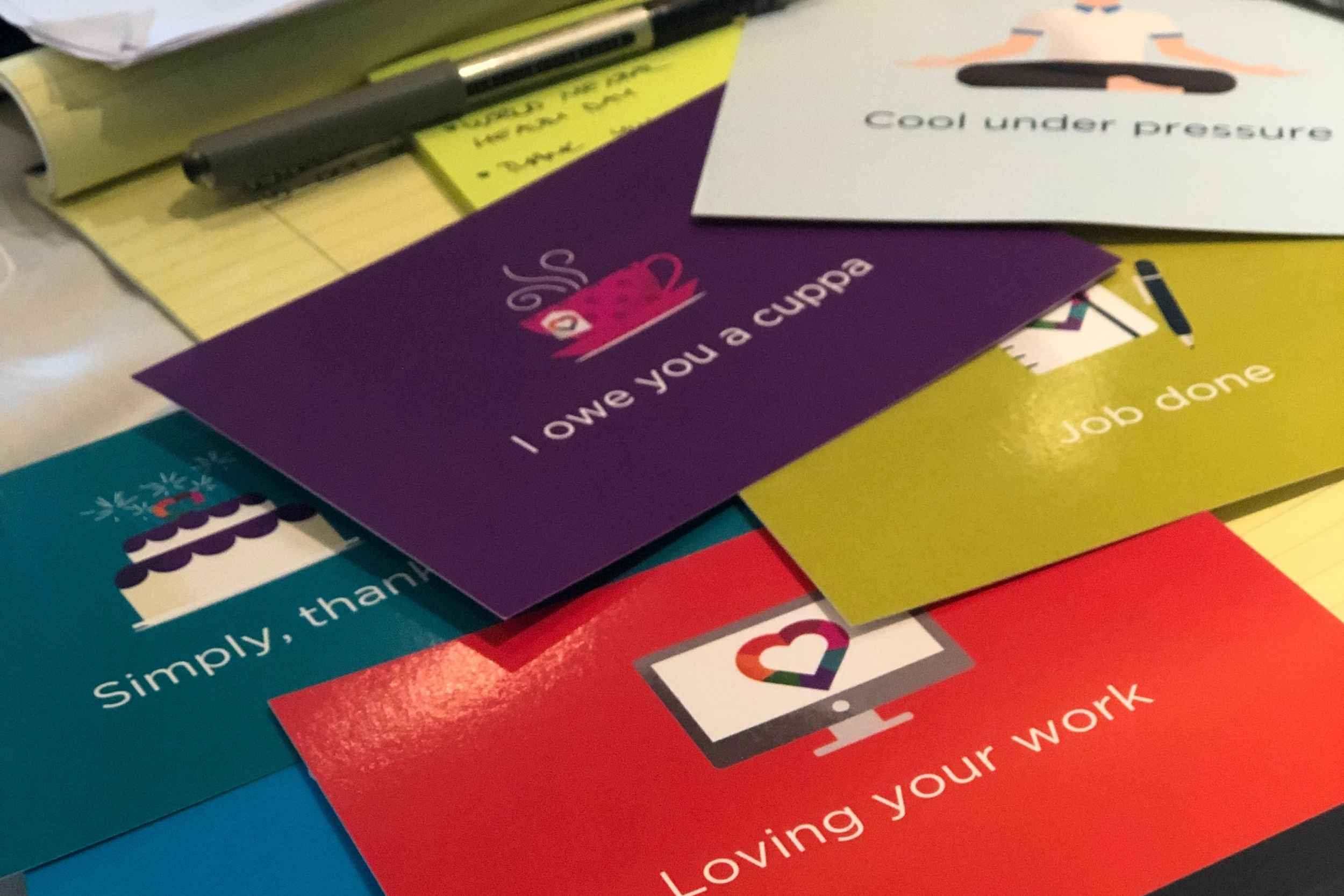
How can I assess the culture of my acquisition?
It might be tricky to really get under the bonnet of your acquisition in advance of the legal transfer date. Certain information around TUPE, finances, compliance and commercial integration, are accessible. But when it comes to engagement and culture, you’re not going to be able to hover around the water cooler or join a team meeting to gather intel!
If you’re using an independent HR consultant to help you navigate the legal aspects of your merger or acquisition this can also be a great way to assess potential pain points and plan for the challenges ahead. An independent person may gain more access to the company being acquired and can help you learn more about the people you’re bringing in.
What clients say about our approach to M&A
“He did all the detail but he was also great at creating relationships. So whilst we were getting all the paperwork and legal stuff in place, he worked really closely with the individuals that were going to come into the business to build trust with them.”
Heyley Selway
Chief Executive, CCHA
“Studies from the Queens School of Business and the Gallup Organization showed that organizations with low employee engagement scores experienced 18% lower productivity, 16% lower profitability, 37% lower job growth, and 65% lower share price over time.”
Emma Seppälä & Kim Cameron
Harvard Business Review
Why does culture matter?
Clearly defined culture is a sign of a positive, engaged workforce, which means exceptional customer service, confident sales and marketing, increased productivity, reduced staff turnover and a better share price. Why? Because when everyone is working towards a shared vision your people are an amazing asset. When they don’t feel part of the bigger picture they switch off, and can do some serious damage.
Try to understand what the cultural differences are between the old and new company. Nip any opportunity for a ‘them and us’ dialogue to take hold with a clear communication plan that’s put into action pronto!

An engaged workforce is more profitable – can you afford not to think about culture?
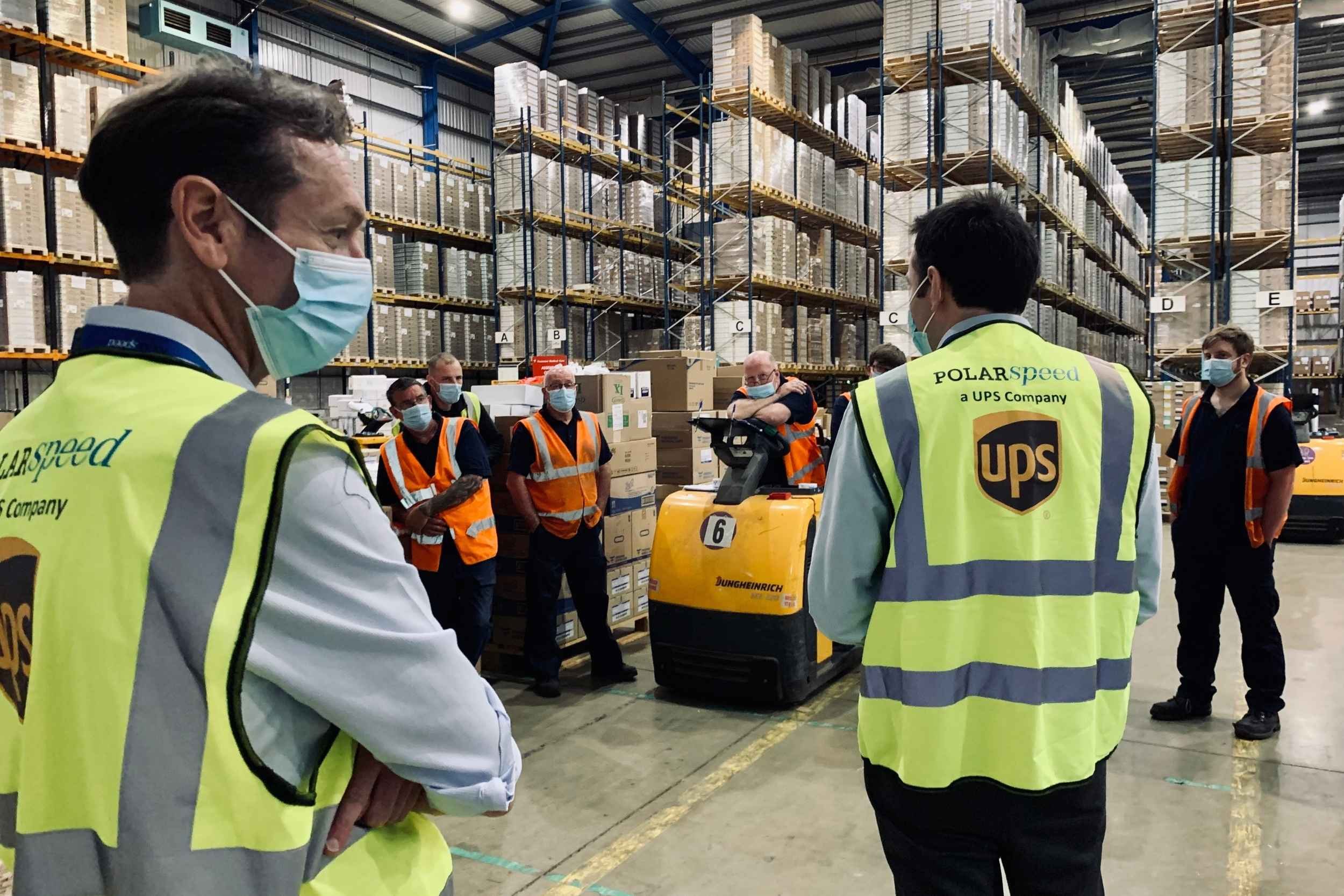
Do leaders know how to promote positive culture?
If people are used to being managed in a certain way it can be deeply unsettling when a new regime comes along. One of the best ways to establish your organisation’s culture and ethos early on, is for management to get out on the shop floor and talk to people.
As a minimum, you should plan on hosting a Welcome Meeting where you can meet your new colleagues and tell them a bit about you and the new company. You can do more. Whether it’s a staff conference, video message, virtual event or just chatting informally to teams or individuals, nothing reassures people more than a boss that takes the time to listen.
As well giving people practical, operational information about how the business will look in the future it’s a great opportunity to gain insight into how people are feeling about the change.
A Welcome Meeting is a ‘must do’ when it comes to mergers and acquisitions
- Working out a change management plan in advance can give leaders structure and focus as they communicate their vision to employees old and new.
- This doesn’t come instinctively to everyone. You might be a sector-leading professional, with a multi-million pound business but actually have no idea how to inspire your workforce. Or you might just be shy! Use leadership coaching to help you articulate why the business matters and what your aspirations for the future are.
- It will help your team understand the right way of doing things and in times of pressure and stress they will feel confident about what you and the organisation stand for and which behaviours are unacceptable.


How can I take people with me?
As you plan for the future, consider the composition of your workforce.
If your organisation is office-based and you’re acquiring a business that works out in the field, how will you make those people feel welcome and avoid a two-tier workforce? Your ways of working and communicating historically may not suit your new colleagues. Sending an internal newsletter once a week via email is no good if half the business don’t sit at a desk (or have a smartphone).
As you move forward, find communication channels that work, so you can keep people informed, feeling part of the same team and contributing to your business goals.
Communicate in new ways to reach colleagues at all levels during and following an acquisition
- Ultimately it’s people that make the organisation tick, so make sure your people soak up the right information, so they’re able to perform in the way you want them to.
Don’t know where to start when it comes to supporting your team through the Cost of Living Crisis?
We are passionate about finding ways to help bosses do the best they can to look after their people.
Some of what we’ve outlined here is simple, but implementing activity that’s targeted to help those that need it most often gets businesses in a pickle. Primarily because they get bogged down about treating all employees the same.
If you need help to work how to support those that need it in a way that’s fair and legal, then please drop us a line. We’d be happy to talk to you.
Build a pandemic-proof business in 2021
The coronavirus pandemic has affected us all in ways we’d have struggled to imagine when 2020 rolled around. If you run a business that has shifted from a face-to-face business model to a blended or virtual offering, the challenges and opportunities you face could leave you feeling all sorts of things: nervous, overwhelmed, uncertain and exhausted, to name just a few.

Now that we’re almost a year into the pandemic, it’s worth considering what the future of your business will look like on the other side of lockdown. If you’re not sure where to start, a HR consultant can help you to reengage with your team, identify the people challenges your business may face in the ‘new normal’ and develop your workforce to make the most of growth and development opportunities.
From leading teams remotely to keeping sight of your long-term business vision, here are some of the ways I’ve helped companies and individuals adapt and succeed during the pandemic.
Let your team hear your voice and see your face
Senior teams should be empowered to lead on operational matters and day-to-day issues. Try to create space and time for your team to look after your customers and to take ownership of their projects. This will release your time to focus on strategic matters, whether it’s the marketing plan for a post-vaccinated world or a new treasury strategy to take advantage of record-low interest rates.
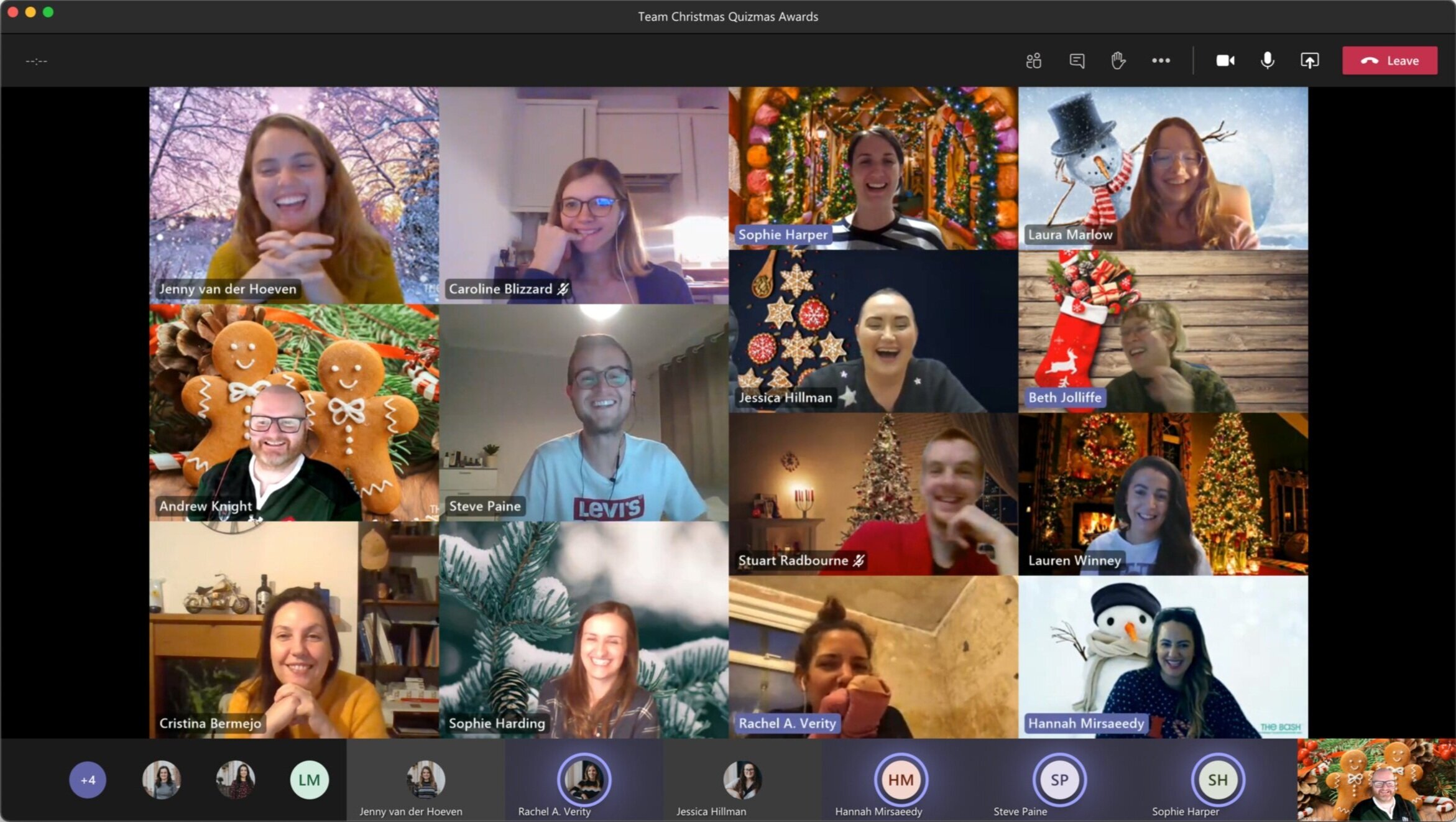
Virtual leadership in the age of COVID-19
Leading a team remotely feels very different to managing a group of people in an office. Yet the core principles remain the same: to keep communication clear and open, inspire trust and get the best from the people you work with.
Keep information flowing and regularly share feedback
- It’s more important than ever to talk to your team regularly about how the business is performing. Involving colleagues in this process (for example, by asking what customers have been saying or encouraging individuals to explain what’s working well for them) can result in a more collaborative conversation where people feel valued and inspired to do well on behalf of the team.

Rebuilding with vision
What should leaders be focused on as they rebuild their businesses following the pandemic? The most important thing is to stick to your core values: making decisions, taking action and behaving in a way that reflects the ethos and character of your company.
Empower others and create space for yourself
- It’s more important than ever to talk to your team regularly about how the business is performing. Involving colleagues in this process (for example, by asking what customers have been saying or encouraging individuals to explain what’s working well for them) can result in a more collaborative conversation where people feel valued and inspired to do well on behalf of the team.
Stay focussed on your long term plans
- As well as keeping up momentum in the short term, it’s important to stay focused on long-term plans. You may need to recalibrate (and that’s OK) but don’t lose sight of your vision. Don’t forget to keep talking about it: clearly communicating your vision and plans to your team while engaging them in your COVID recovery plans will show clear and reassuring leadership as everyone recovers from the crisis.
Champion safety and wellbeing at work
- Above all, prioritise the safety and wellbeing of your workforce, your customers, your partners and stakeholders. People will always remember how you made them feel – you want that feeling to be safe, positive and reassuring.

Supporting your business through organisational change
- Economic and societal change are two of the big drivers for organisational change. COVID-19 has triggered both, making now an ideal time to consider how your organisation can adapt to meet the challenges and embrace the opportunities of 2021 and beyond.
- Working with an organisational change consultant will help to ensure that you make the most of the process. I’m passionate about helping my clients to optimise their organisations and meet whatever challenges come their way; getting to know the specific challenges your business is facing before coming up with smart, long-lasting solutions that are tailored to your company.
Don’t know where to start when it comes to supporting your team through the Cost of Living Crisis?
We are passionate about finding ways to help bosses do the best they can to look after their people.
Some of what we’ve outlined here is simple, but implementing activity that’s targeted to help those that need it most often gets businesses in a pickle. Primarily because they get bogged down about treating all employees the same.
If you need help to work how to support those that need it in a way that’s fair and legal, then please drop us a line. We’d be happy to talk to you.


